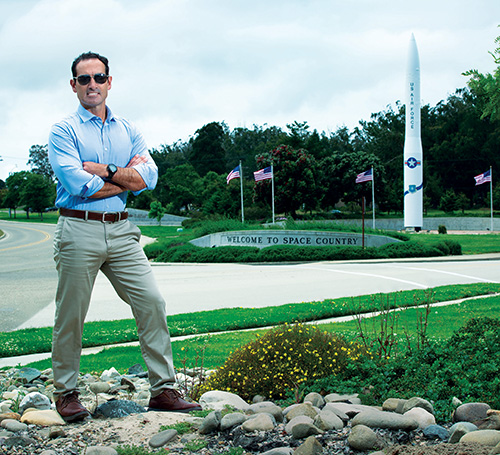By Marissa Cote
Pete was roughly 200 feet underground when planes hit the Twin Towers in New York City on Sept. 11, 2001.
“While the world wondered if more planes were going to crash, I was focused on nuclear command and control,” said Pete, who is now a flight test execution manager on the Sentinel program at Northrop Grumman.
Back then, Pete was a U.S. Air Force Missileer stationed at F.E. Warren Air Force Base in Cheyenne, Wyoming, where he manned the Peacekeeper Intercontinental Ballistic Missile (ICBM) weapon system — the land leg of the nuclear triad.

What was supposed to be a 24-hour shift turned into seven days underground inside a Launch Control Center where ICBM missiles are housed.
Sunday Shift
Pete and his deputy began their shift on Sunday, Sept. 10.
“Typically, Sundays were known as quiet days,” said Pete. “I had every expectation my shift would be slow and ordinary; that night I let my deputy sleep first.”
On the morning of Sept. 11, it was Pete’s turn to sleep — but that didn’t last long.
"I remember my deputy waking me up saying we had a message. I woke up, jumped out of bed with a surge of adrenaline and said, 'Don't touch anything.' I knew this was serious," said Pete. “Receiving messages didn’t happen often.”
Launch crew members, also known as Missileers, must follow a strict process when on nuclear alert. Both crew members must open and read the message together.
“That first message was eye-popping,” said Pete, remembering the urgency of the Sept. 11 situation. “The nation transitioned into a state of readiness we had not experienced since the Cuban Missile Crisis."
As the crew moved through the process, the seriousness of the situation became more apparent. Pete and his deputy watched the events happen live on television while also maintaining their composure and combat readiness.
"You see it in movies, but when it happens in real life, your heart, your mind and your physicality escalate to extreme levels,” said Pete. “That first hour was the most intense and scared I have ever been in my entire life.”
Meals and supplies were sent down through an elevator to sustain the crew. As each day passed, more information came to light and the crew was able to breathe a bit easier, standing down as the threat became less imminent.
“The seven days I spent underground serve as a constant reminder of why I am so passionate about the work I do on Sentinel,” said Pete, who is now based at Vandenberg Space Force Base in California. “It is why I pursued working at Northrop Grumman after I retired from the military.”
Pete said there is not a day he doesn’t think about that week and the immense pride he felt when he surfaced from the ground.
“Being secluded underground for seven days gave me a greater appreciation for the little things in life,” he said. “The warmth of the sun, the views from my walks along the California coast —they have a different meaning.”
22 Years Later
After 22 years, Pete’s story holds more weight than ever before. Now, he’s protecting the nation as part of the Sentinel team, contributing to the modernization of our ICBM weapon system.
“I share my story because everything we do at Northrop Grumman has a direct link to delivering a quality weapon system, nuclear deterrence and what our Missileers are doing every day,” said Pete.
The Air Force selected Northrop Grumman for the critical task of modernizing the ground-based leg of the U.S. nuclear triad. The Sentinel weapon system is a cornerstone capability of the triad, which will support global stability to protect our nation and assure allies for decades to come.
"The criticality of what Northrop Grumman is providing through the Sentinel program is the reason I work here,” said Pete. “I want to ensure Northrop Grumman is successful with the defense and prosperity of our country.”